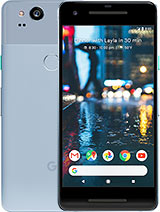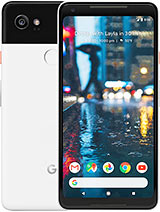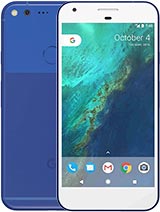Google Pixel 2 Camera Test vs. $20k Hasselblad By Tyler Stalman
I, don't know about you, but one of the biggest motivations for me to upgrade my cellphone as often as I do is that the cameras just keep getting better. Now we're not seeing as big of leaps as we used to in the time of iPhone 4 iPhone 5s, but this year, I think we saw a fascinating improvement in the Google Pixel -. They really push things forward and even though they're using similar lens and sensor to everyone else, their image signal processing is doing such a good job. That I think this camera deserves a little extra attention. So what I'm, going to do is I invited my friend Jason over whose, an incredibly talented, professional photographer that shoots on a Hasselblad which is a large, beautiful, expensive, medium format, camera, and we're going to compare the two and see what you're getting when you really spend the extra money for a big pro camera. So how does the 2017 flagship cell phone camera? It costs around $1000 compared to a professional medium format system which cost closer to $20,000, all right, so Jason came over, and he brought his h40 Jason.
I am I. Don't know a lot about housewives, I, don't shoot them. So, let's out, let's sit down, and you can explain how this camera works to me. So I've used the x1d a bit. I did a review about it, but that was kind of the most of the medium format.
I, don't use them often, so why do professionals still reach for these big sensor cameras? Well, traditionally, in the past, a camera with a larger sensor has cleaner information and the sensor- and this is generally about 30% as a rule of thumb larger than a 35-millimeter. The larger sensor also gives you more covering power, say with a portrait lens, 80, millimeter and mixed with the leaf shutter. You can shoot at any sync speed or flash compound right. So it's a mix of that there's more raw horsepower in this thing, in a way like the hardware is more powerful, and then it also just brings some professional features that you need. So this isn't going to bring any of those pro features like faster, like syncing, with the flash right, but what I think it can do well is things like dynamic range and sharpness and a few others that I want to test side-by-side because okay I know this isn't going to beat that, but I think there are some places that we're going to be surprised how much better this performs than it deserves to write.
Part of the way I've been thinking about this is that this is doing it all in hardware, whereas this is doing a lot of that work, because software, and I think we're going to see huge differences when we zoom into a hundred percent versus looking at thumbnail like when we look at Instagram size, can you really tell the difference right? So, alright, let's try something sounds good okay, so we need to test these in a way that we get some kind of blown highlights and some dark shadow. So, let's set up our light and to light this we're using the new Epicure 300 d, which is a very powerful LED light that I'm excited about I'm kind of considering buying it. The camera store TV lent it to me today, and so I'm excited to test it out. You set up our light, have a really high ratio between the brightest and darkest points. So this should stretch the dynamic range of both cameras.
Quite a bit, Anya has come to volunteer her modeling services free for free, but so what we've done here is we set up our light in a place? That's like a really high contrast situation, where this side is a lot brighter than this side, and then we're going to see which photo holds more detail in those highlights and shadows any camera was. The large sensor is going to have a huge advantage here. Traditionally, small sensor cameras really struggle with dynamic range, but the Google has some tricks up its sleeve, using HDR plus to combine up to 10 images into one final exposure. So looking at these results, I do think the pixel is holding up really well, like all the photos are very usable, especially at this thumbnail size. So this is kind of a know well exposed one.
We can compare it to the Hasselblad, where the pixel isn't doing as well, which isn't terribly surprising, is that the shadows lose quite a bit more detail. The other biggest thing is: if we look at where the highlights start to blow out and get overexposed on that Hasselblad, it's a really smooth transition, like your skin, still looks great, even though there's too much exposure on it and the HDR is able to save it a bit like here's full overexposure. You can see it just clips. Here's the HDR kicking in bringing a skin back, but it adds a bit of extra texture to the skin that isn't really desirable. So, in the end the Hasselblad is doing much better any DSLR.
It's going to do better, but at this kind of thumbnail size that what I've seen is an Instagram, sighs I mean I, think the pixels doing fine, okay and next, let's do some tests to see how the sharpness of these cameras stack up Jason. How many megapixels is in the Hasselblad, 40, okay, so I think at a hundred percent. We know who's going to win like when we zoom all the way in, but in real world comparisons, you're six by nine laptop screen or Instagram. We'll see this one's interesting because, although the large sensor does make for a way higher resolution image so especially if you're looking at a printed at a large format or on a big screen, but the perceived sharpness on a smaller screen will probably be pretty similar. Ending these results when I'm zoomed out I think they look pretty similar.
Now, if we zoom in you really can see a pretty huge difference, you start to see a bit of what I'd call that watercolor effect in her face where you can see the camera starting to like to remove noise, because this wasn't a really bright lighting situation, so it had to clean up the photo a bit, whereas in the Hasselblad photo it's just perfectly clean all the way through, but at the same time, I think there is quite a few photos on this that missed focus. There were actually a few more photos on the ask blab that were completely out of focus then on the pixel in these two photos, I'm looking at have been downsized to be the same resolution. The blends are, don't quite match, so that's why you're seeing and zoom in now. If we look at the house of light at a hundred percent yeah okay, this is obviously sharper. This is what the extra resolution tests for you, but you're only going to see that if you blow up the photo in a smaller size, you don't notice the difference.
Oh, and did I mention I'm, giving away a pixel too. All you have to do is follow me on Instagram and comment to my most recent photo and say hashtag, amazing or a camera emoji. Just something so I know that you're interested in the giveaway and do all that before February 1st 2018, now we're going to test the depth of field we've added some Christmas lights into the back. There going to be some nice little points of light and the plants will blur out to the way Google's algorithm works, for this is fascinating. It basically takes the dual pixels, which is each pixel split in two and there's like a micron of distance between them, and it uses that difference of perspective to calculate what's in the foreground and what's in the background, whatever it sees as the background or foreground pixels, it turns them into little discs and those all stacked on each other is what gives that perception of like a lens blur and not just in Gaussian blur.
Since mobile phones have added portrait modes with intelligent background blur average people that would never buy a big camera have access to this look and based on my Instagram feed. It's a huge hit to be honest. I always think that I can see past this digital blur and that you know since I'm a photographer and have been for a while. I can always spot it. But you know when I see things fly by in my Instagram feed a lot of the time portrait mode fools me and looking at these two, if I squint my eyes I might forget, which is which, especially, if we're looking at the plant here, the plant blur is very similar.
It doesn't really give it away. What does give it away? Is the lights? There's a really crisp outline a very specific look to the Christmas lights in the true lens and sensor wire, coming from the Hasselblad, where, as we switch over to the Google it is, it does much more digital. That is the giveaway point. The Google did a pretty great job of cutting her out. You can see a few artifacts here, but it does the best job of the current smartphones I think it does a better job than the iPhone 10, but there were a few example photos where it didn't work as well, and I did select the best of the photos, so you are going to have to take a few more photos to make sure that portrait mode works for you and, of course, if we look at the Hasselblad, it's well, it's kind of perfectly, because it's optics one feature that the Hasselblad can't offer is selfie portraits, and I've been really surprised how great these work on the Google Pixel to ionic.
Thank you for the help everybody goes see you on his blog onion, be and remember, anytime. You see somebody telling you that a smartphone is gonna, be replacing your DSLR. It's probably just could be just like doing a comparison between a twenty thousand dollar camera and a smartphone.
Source : Tyler Stalman



























